Kanazawa is the capital of the Ishikawa Prefecture on the central island of Honshu, next to the Sea of Japan. I visited this city in May 2023 for a day and had a blast! So, what is Kanazawa, Japan famous for?
Well, Kanazawa is known for the stunning Kenrokuen Garden, one’s of Japan’s Top 3 Landscape Gardens! Then there’s the iconic Nezumitamon Gate, which leads you to Gyokuseninmaru Park and Kanazawa Castle. Finally, I loved wandering around Oyama Shrine complex and garden.
The Maeda Clan ruled today’s Ishikawa Prefecture from 1583 to 1869. They were the second richest family in Japan back then. Since Kanazawa was spared by air raids during World War II (same as Kyoto), visitors can still find remains of the Edo period (1603-1868) today.
But Kanazawa was affected by the earthquake on January 1, 2024. It’s only 100 km (62 miles) south of the Noto Peninsula, the epicenter of this terrible incident. Fortunately, soon after, Kanazawa opened most of its tourist attractions again.
Oyama Shrine & Garden area
Address: 11-1 Oyamamachi, Kanazawa, Ishikawa 920-0918, Japan
Oyama Shrine (or Oyama Jinja) was completed in 1599 to honour Maeda Toshiie. He was the first lord of the Maeda Clan and there’s also a statue of him on the shrine grounds. Initially, Oyama Shrine stood on nearby Mount Utatsu and later moved to its present location in 1873.
What’s unique about Oyama Shrine is the main entrance gate which beautifully blends together Japanese, Chinese, and European religious themes. A Dutch architect designed it and added stained glass windows on the third floor. Besides, it used to be the original entrance to Kanazawa Castle.
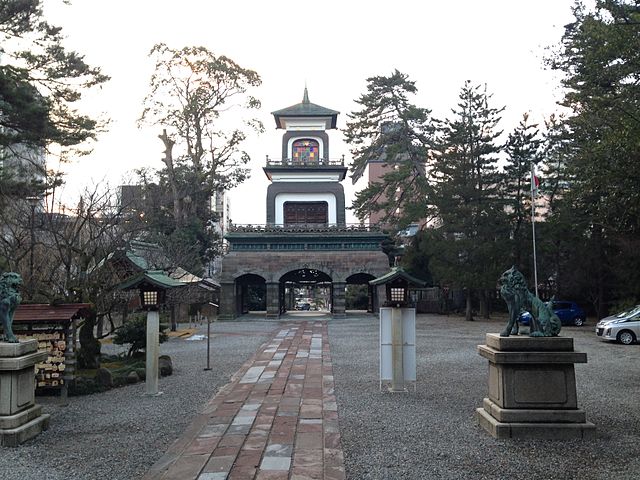
The entrance gate to Oyama Shrine. Photo credit: Soramimi on Wikimedia Commons.
After walking through the gate, visitors will spot impressive shrine buildings for worshipping, as well as the peaceful garden area. It features ponds, bridges, stone lanterns, small waterfalls, and walking paths. I felt like I’d stepped right inside a Studio Ghibli movie! 😀
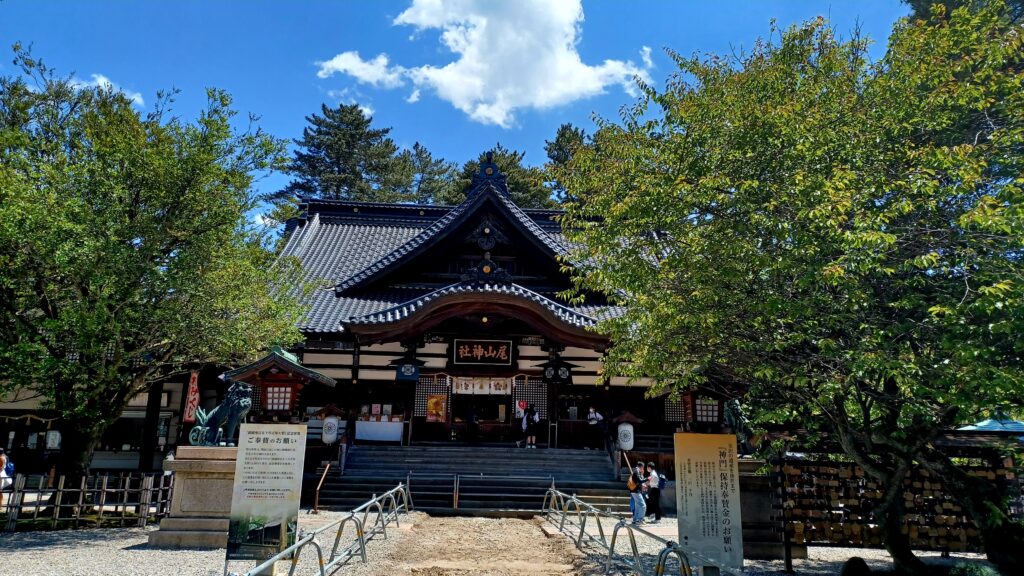

The Main Worship Hall at Oyama Shrine and the peaceful garden area.
The Oyama Shrine complex is always open and there’s no admission fee.
Nezumitamon Gate and Bridge
Address: 1-1 Marunouchi, Kanazawa, Ishikawa 920-0937, Japan
Our next stop is the iconic Nezumitamon Gate and Bridge, one of the five entrances to Kanazawa Castle Park. The gate and bridge were first built in the 17th century. Sadly, the bridge was demolished in 1877 because of its age and wear. Soon after, in 1884, a fire ruined Nezumitamon Gate.
Nezumitamon Gate and Bridge reopened in July 2020. Thanks to historic records that were used, they look pretty much the same as 400 years ago! The bridge was reinforced with steel as well, so it can survive earthquakes. In the end, it was covered with a wood finish.

Fun fact: A 19th century historian assumed that Nezumitamon comes from the word gate (mon) and its grey colour, which is similar to a mouse’s (nezumi).
Visitors can walk around inside Nezumitamon Gate and learn about its history. Admission is free and it’s open daily from 9 am to 4:30 pm (last entry is at 4 pm).
Gyokuseninmaru Garden
Address: 3 Marunouchi, Kanazawa, Ishikawa 920-0937, Japan
Gyokuseninmaru Garden is a stunning landscape garden inside Kanazawa Castle Park. It was completed in 1634. It is named after Gyokusen, the wife of Toshinaga Maeda, the second lord of the Maeda Clan.
It was abandoned during the Meiji era (1868-1912). But authorities decided to rebuild Gyokuseninmaru Garden in an authentic way and it reopened in 2015.
It has bridges, a large pond, lots of trees, and stair-like waterfall that flows from one of the garden’s distinctive stone walls. The Gyokusen-an Teahouse is perfect for taking a break and trying traditional Japanese matcha tea and tasty Wagashi sweets (for 730 ¥)!

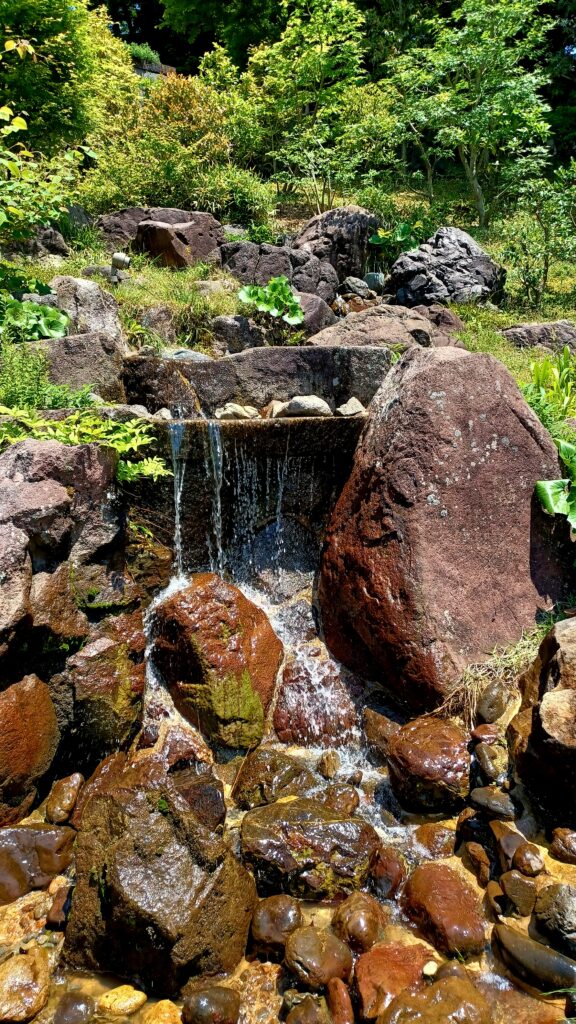
From March 1 to October 15, Gyokuseninmaru Garden is open daily from 7 am to 6 pm. In the winter months, it’s open from 8 am to 5 pm. There’s no admission fee.
If you’re visiting Gyokuseninmaru Garden after sunset on a Friday, Saturday, or the day before a public holiday, it is lit in beautiful colours. They are different every season and that’s the only time when the garden is open until 9 pm!
As per Japan Guide, visitors are currently not allowed to walk around Gyokuseninmaru Garden, because of a damage from the earthquake on January 1, 2024. Hopefully, it will reopen soon!
Kanazawa Castle
Address: 1-1 Marunouchi, Kanazawa, Ishikawa 920-0937, Japan
Kanazawa Castle is one of Kanazawa’s major historic landmarks, so it’s a must-see on your visit!
The original castle dates back to 1580. Only three years later, the Maeda Clan moved in and lived here for 14 generations until 1868. With time, the castle burnt down several times.
Since the latest fire in 1881, only two storehouses and the Ishikawa-mon Gate are originals. During World War II, Kanazawa Castle was an army base. Then it was a campus building of Kanazawa University from 1949 to 1989.
Finally, the castle was designated a National Historic Site of Japan in 2008.
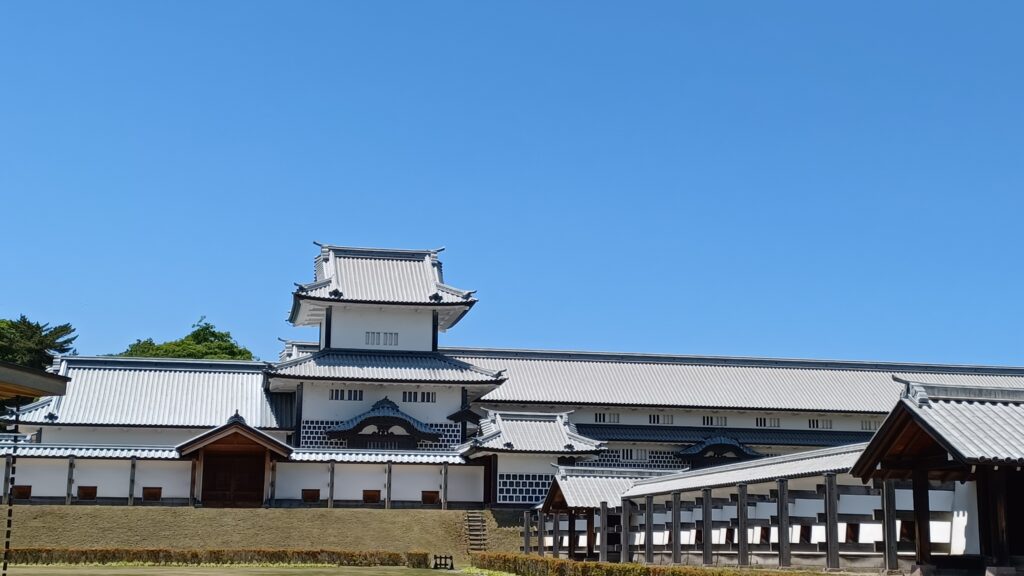
Two turrets and the Gojukken Nagaya Storehouse, which were original castle buildings, were restored in 2001. Thanks to using traditional techniques and materials, they look the same as back in the 1850s. The Hashizume-mon Gate, another reconstruction, was added in 2015.
Kanazawa Castle Park is open all year and it’s free to walk around outside. But there’s an admission fee of 320 ¥ to visit the Hishi Yagura, Gojikken Nagaya, and Hashizume-mon Tsuzuki Yagura (turret and storehouse).
Kenrokuen Garden
Address: 1 Kenrokumachi, Kanazawa, Ishikawa 920-0936, Japan
Kanazawa is also famous for Kenrokuen Garden right next to Kanazawa Castle. Kenrokuen means “Garden of the six sublimities”, which describe the garden’s unique characteristics: Spaciousness, tranquility, artifice, antiquity, water sources, and amazing views.
The Maeda Clan built Kenrokuen Garden for private use from the 1620s to the 1840s. It later opened to the public in 1871. The garden area covers 11.4 hectares and is a perfect spot to walk around and being in nature for a few hours!
Kenrokuen Garden has stone bridges, streams, two main ponds (Kasumigaike and Hisagoike), Japan’s oldest fountain, the Midoritaki Waterfall, two teahouses, the two-legged Kotojitoro Lantern, and tons of trees and plants!
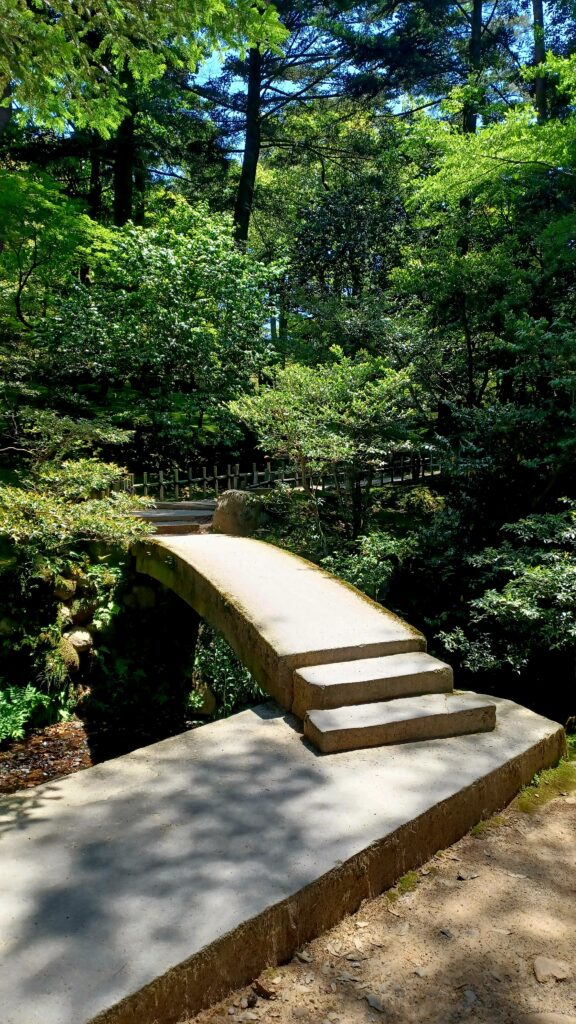
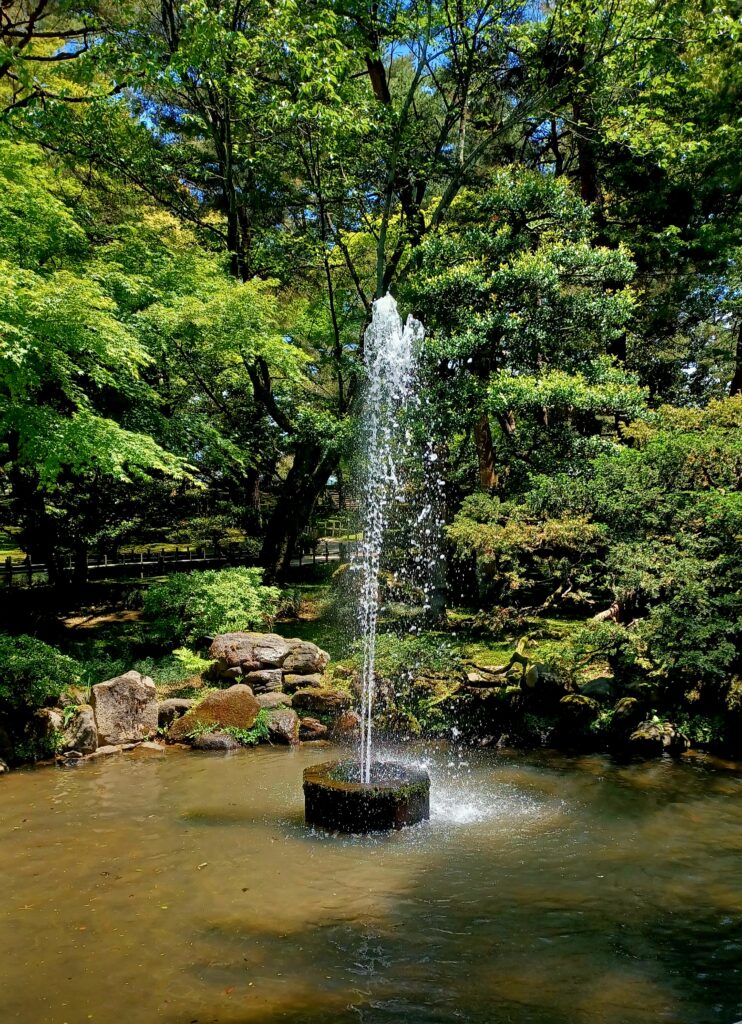
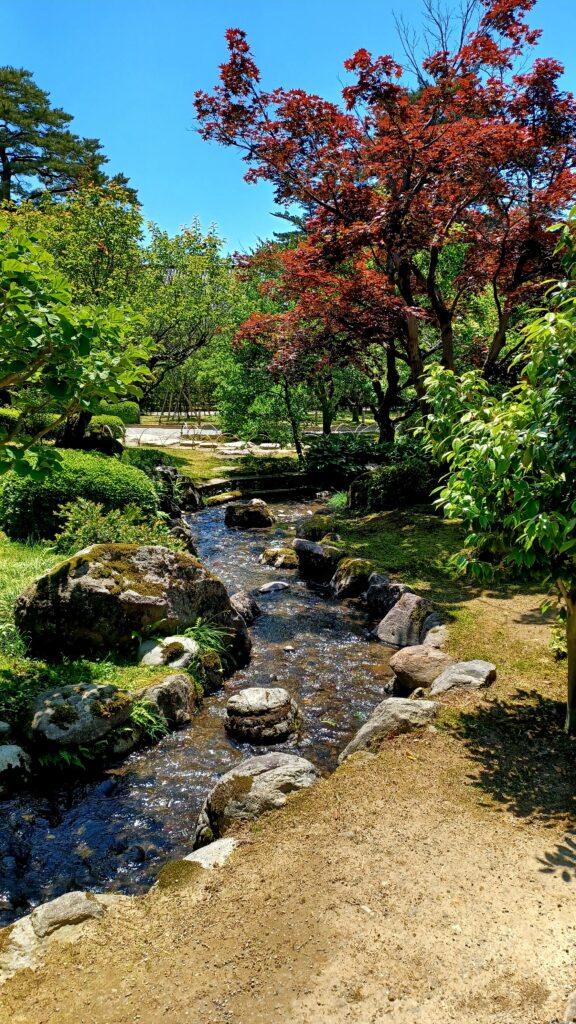
In spring, visitors come to Kenrokuen Garden to see plum and cherry blossoms and in early summer, they enjoy the greenery. In the fall, colourful maple leaves dominate the garden. Lastly, yukitsuri (“snow hangings”) cover the pine trees in the winter to protect them from heavy snow.
So Kenrokuen Garden looks different each season! I also loved seeing the staff’s efforts to keep Kenrokuen Garden spotless, and that they set up thick logs to avoid some trees from falling down!
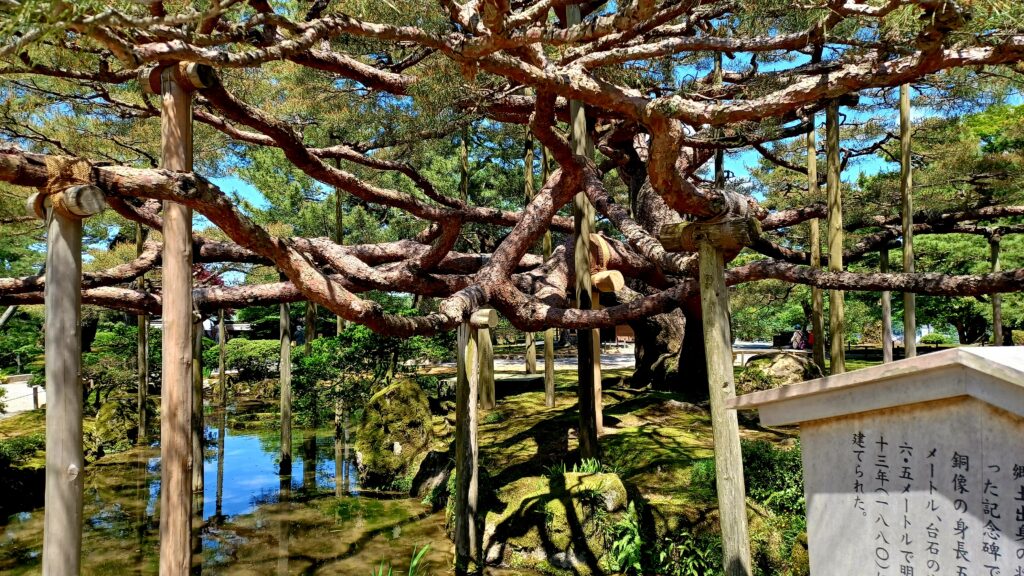

Left: Thick logs are protecting a tree from falling down. Right: Kenrokuen Garden in the winter with the Kotojitoro Lantern and yukitsuri tree covers. Pic #2 is credit of tab2_dawa on Wikimedia Commons.
Kenrokuen Garden is open 365 days a year. From March to October 15, it’s open 7 am to 6 pm and from October 16 to the end of February, it’s open 8 am to 5 pm. Admission is 320 ¥ per person.
Other Attractions Kanazawa is Famous for
Are you sick of reading about Kanazawa’s beautiful castle and garden areas now? Perfect 😀 😀
So here are few other attractions that Kanazawa is famous for:
Higashi Chaya District
Address: 1-13 Higashiyama, Kanazawa, Ishikawa 920-0831, Japan
Similar to Takayama, Kanazawa has three well preserved districts from the Edo period. The largest and most beautiful is the Higashi Chaya District. It is famous for its well preserved wooden chaya (teahouses), where geisha used to perform for visitors.
The Shima Teahouse is open to the public as a museum, and you can see the rooms where the geisha danced and played traditional music. Other buildings from the Edo period inside the Higashi Chaya District have been transformed into shops and cafés, sake breweries, or restaurants.
Omicho Market
Address: 50 Kamiomicho, Kanazawa, Ishikawa 920-0905, Japan
Only a short walk from Kanazawa Station, Omicho Market is perfect to try some local food from the 200 vendors and restaurants sitting here every day. It usually gets very busy around lunchtime, when both locals and tourists come here. Omicho Market is open daily from 9 am to 5 pm.
Thanks to Kanazawa being so close to the Sea of Japan, it’s known for the best seafood in the country. So if that’s your thing, one famous specialty dish to try is Kaisendon (seafood donburi), which vendors sell at Omicho Market as well.
Nagamachi Samurai District
Address: 1 Chome-3-12-2 Nagamachi, Kanazawa, Ishikawa 920-0865, Japan
Back in the Edo period, groups of society lived in dedicated districts of Kanazawa. The Nagamachi Samurai District was home to wealthy samurai and their families. Visitors can see a restored samurai residence at the Nomura Samurai House & Garden.
The residence is open from 8:30 am to 5:30 pm (April to September) and 8:30 to 4:30 pm from October to March. Admission is 550 ¥ per person.
To learn more about these cool attractions, check out this video by Japan-Guide:
Conclusion
As you can see, Kanazawa is worth visiting, thanks to its many unique attractions! Since it’s not on every traveler’s Japan itinerary, it’s less crowded than Tokyo, Kyoto, or Osaka. Besides, it’s easy to get around on foot. Many of the attractions are free, so it’s a good place to save money as well!
If you prefer to take a bus, the Kanazawa Loop Bus travels on a circular route that covers pretty much all of Kanazawa’s famous attractions. It leaves from Kanazawa Station’s East Gate bus terminal every 15 minutes from 8:30 am to 6 pm.
My favourite places to visit in Kanazawa are Kenrokuen Garden and the iconic Nezumitamon Gate and Bridge. So I hope I have inspired you to visit this beautiful Japanese city someday 😉 Or if you’ve been to Kanazawa, feel free to share some insider tips in the comments. Cheers!
Traveling around Japan for a while? Then check out these posts:
How to Spend 48 Hours in Kyoto, Japan
Is Nikko, Japan Worth Visiting?
Fukuchiin Temple Stay in Mount Koya, Japan
Disclosure: I only recommend products that I’ve used in the past, and all opinions expressed in this post are my own. This post contains affiliate links. If you use one of the links throughout the page to buy something, I may earn a small commission at no extra cost to you. Thanks.
- HOW TO SPEND A PERFECT DAY IN HOWTH, IRELAND - April 22, 2024
- 11 REASONS TO VISIT QUÉBEC CITY, QC - April 4, 2024
- WHAT IS KANAZAWA, JAPAN FAMOUS FOR? - March 10, 2024

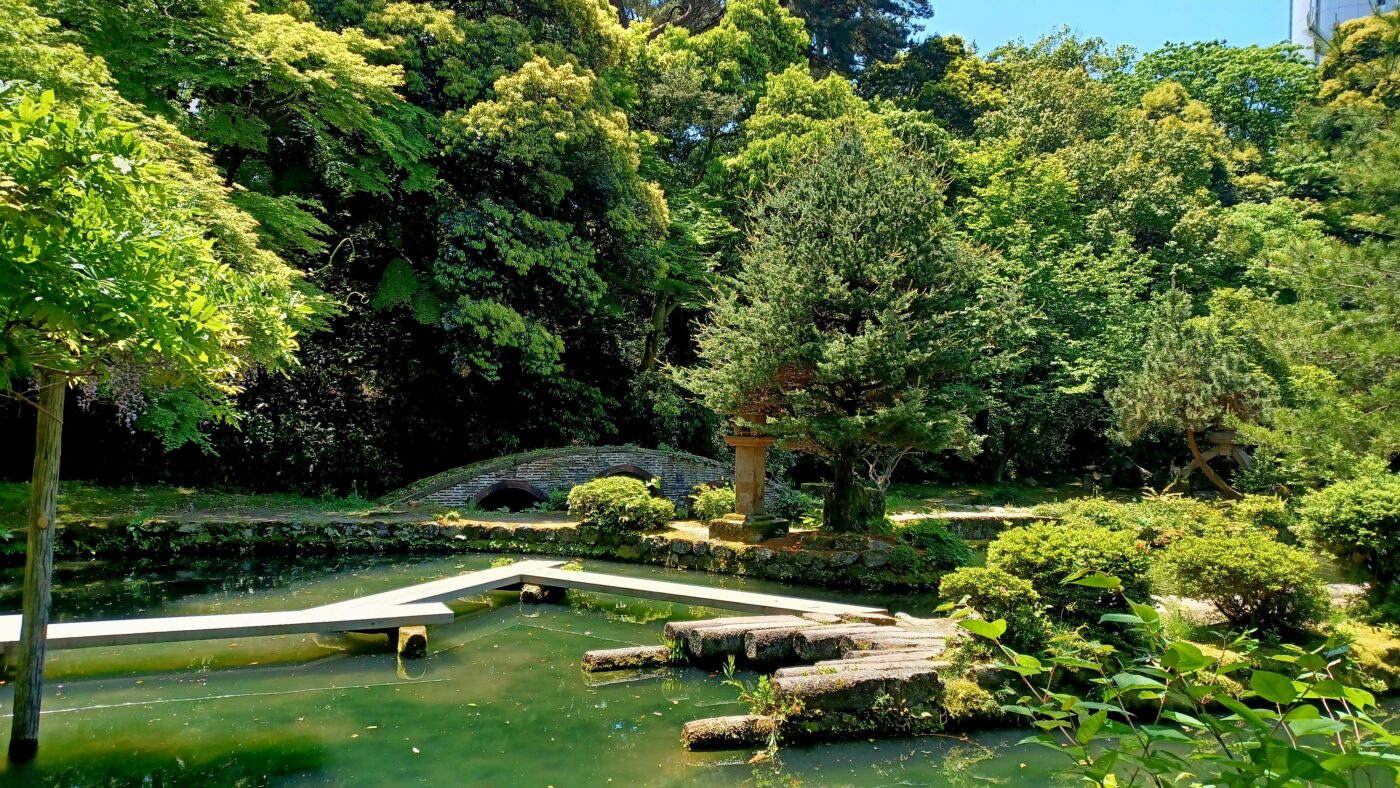
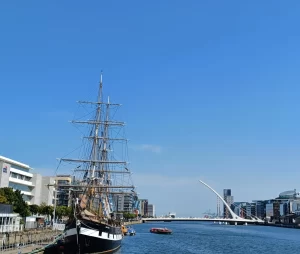
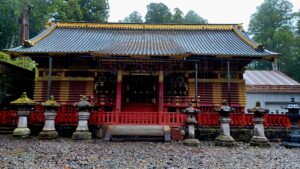
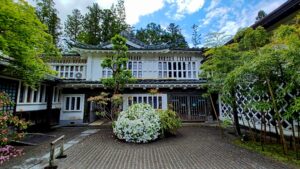

Leave a Reply